From May 15 to May 18, 2024, the 13th International Symposium on Calcium Signaling (SCSC) was successfully held at Huazhong University of Science and Technology (HUST). As a prestigious academic event in the field of biophysics, this biennial conference is jointly organized by scientists from around the world. Nearly 200 top experts, scholars, and researchers in biophysics, including Nobel laureate in Physiology or Medicine Professor Erwin Neher, U.S. National Academy of Sciences member Professor Denise Montell from the University of California, Santa Barbara, Conference Chair (International) Professor Xu Haoxin, Dean of the College of Basic Medicine at Zhejiang University, and Conference Chair (Mainland China) Professor Liu Jianfeng, Dean of the College of Life Science and Technology at HUST, participated in the event. The conference featured four days of keynote presentations and in-depth discussions around six main topics: calcium signaling and related ion channels, calcium stores and calcium-binding proteins, G-protein coupled receptors and cellular function, calcium signaling in health and disease, ion channels and new drug development, and new techniques for calcium signal detection. This marks the first time the symposium was held in Wuhan, underscoring over 40 years of dedication and efforts in biophysics by the faculty and students at the university. It is expected to further advance the development of life sciences at HUST in the future.

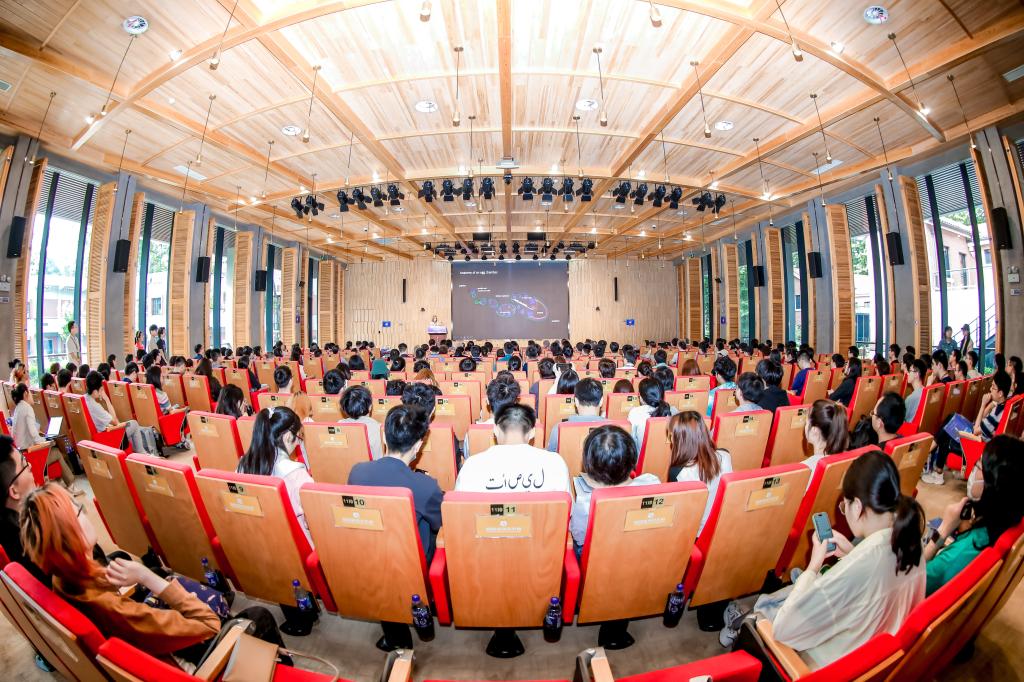
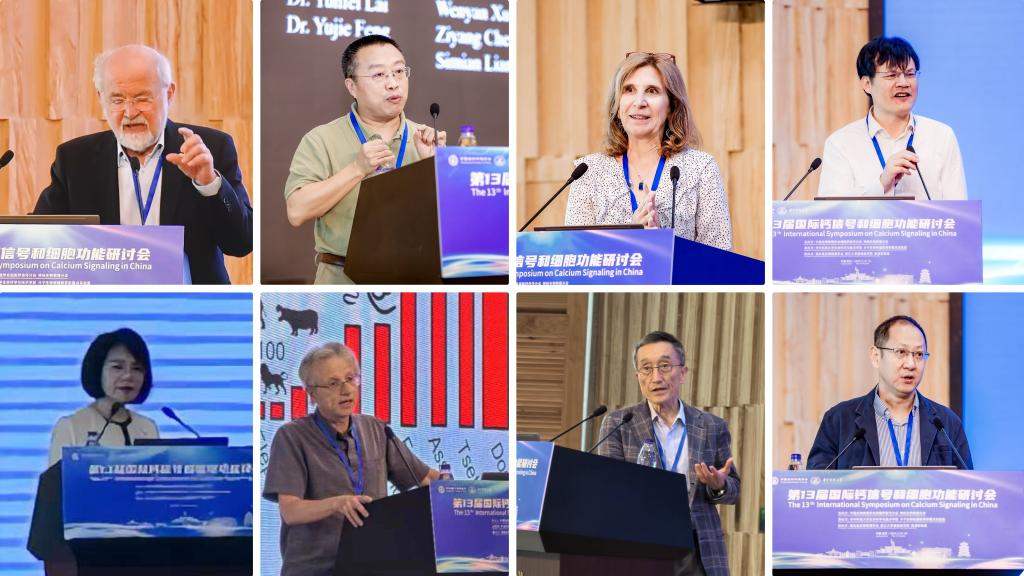
Pictures (Conference Venue)
On the day of the opening ceremony, Zhan Yiqing, Member of the Standing Committee of the Party Committee and Vice President of Huazhong University of Science and Technology (HUST), attended the event and delivered a speech. She briefly introduced the university’s key facts and emphasized that the College of Life Science adheres to the development strategy of integrating science, engineering, and medicine. With a focus on the frontiers of life sciences, the college actively promotes international exchange and collaboration. This conference has established a high-level international platform for communication in the field of calcium signaling, which will further advance developments in this area. The university will continue to support such international conferences, fostering exchanges and cooperation among global scholars.
It is worth noting that Nobel laureate Professor Erwin Neher from the University of Göttingen, Germany, who attended this symposium, had visited HUST as early as 1994. At that time, Professor Neher flew from Shanghai to Wuhan, accompanied by Professor Kang Huaguang, the founder of the biophysics discipline at HUST. Academician Yang Shuzi, who was then the president of the university, awarded Professor Neher an honorary doctorate from Huazhong University of Science and Technology. During this visit, HUST President Academician You Zheng presented Professor Neher with the Honorary Professorship of HUST. President You noted that since 1994, Professor Neher has closely collaborated with the College of Life Science in scientific research and talent development, yielding fruitful results. He expressed hope for further cooperation in the areas of cultivating innovative talents and achieving scientific independence at a high level, leading to more landmark achievements. This collaboration is expected to set a new example of Sino-German cooperation in science and education, contributing significantly to the advancement of the biophysics field.

Picture (In 1994, Academician Yang Shuzi, then President of Huazhong University of Science and Technology, awarded Professor Erwin Neher an honorary doctorate.)
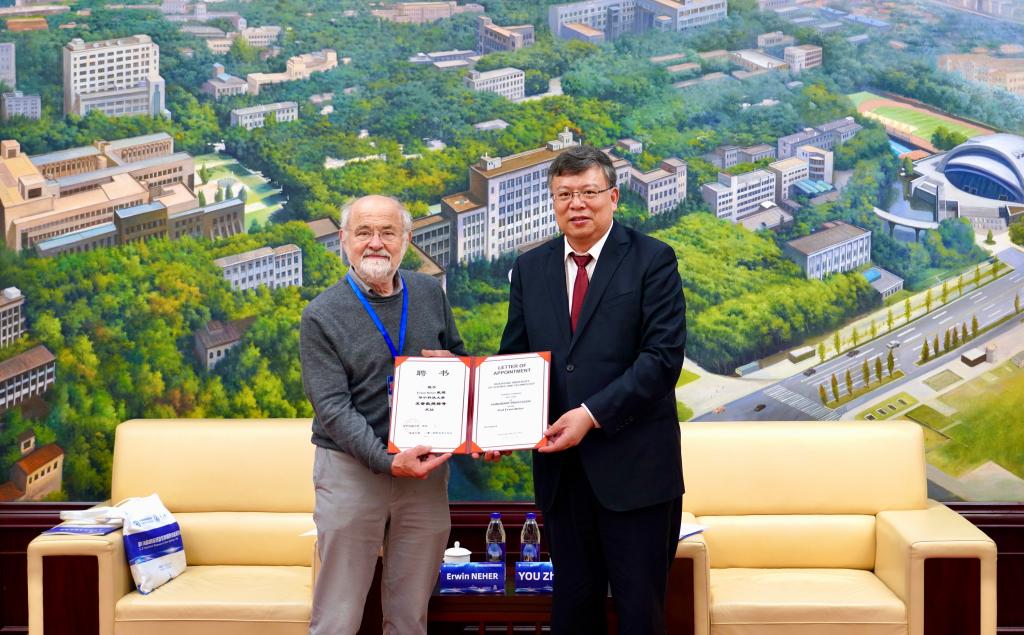
Picture (In 2024, HUST President Academician You Zheng awarded Professor Neher an honorary professorship.)
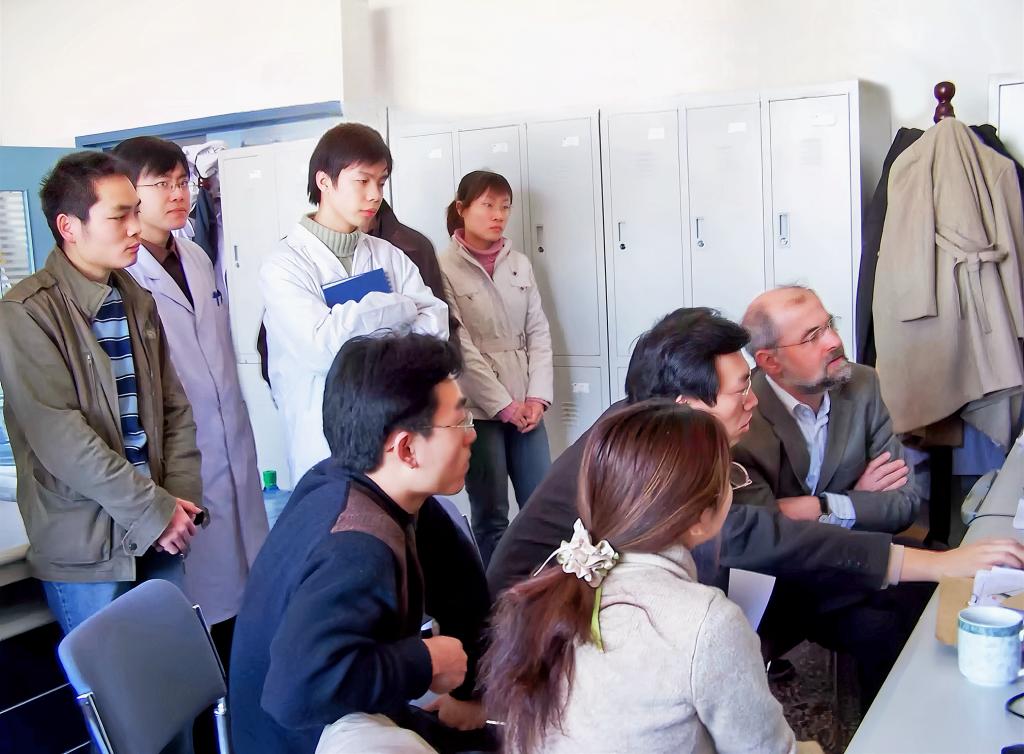
Picture (In 2005, Professor Neher guided students and faculty in conducting research.)
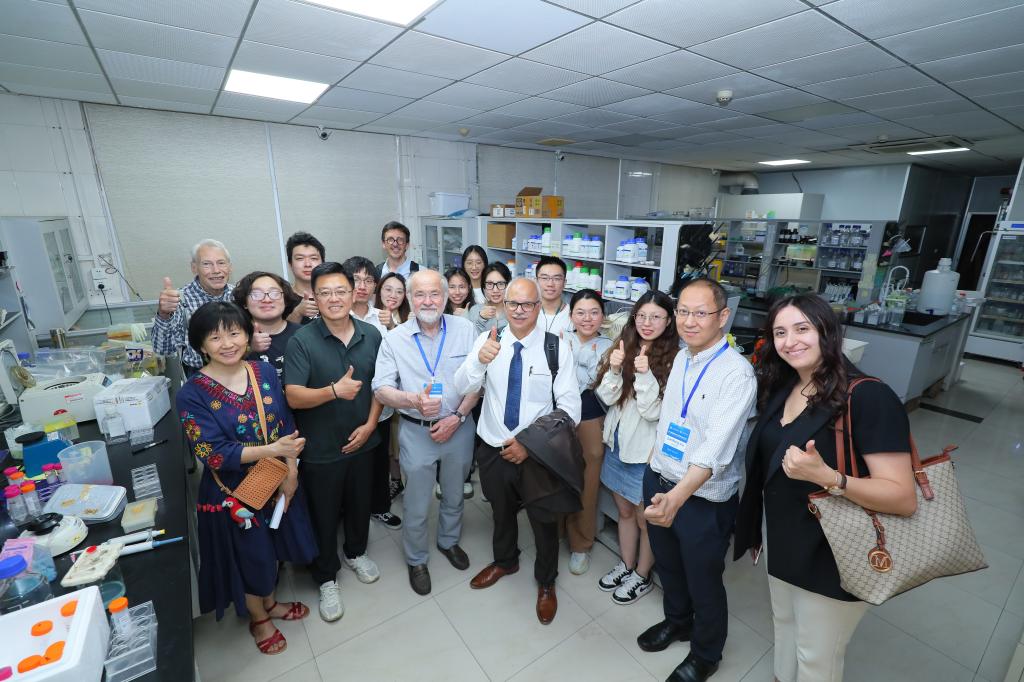
Picture (In 2024, Professor Neher visits the School of Life Science laboratories)
Originating in 1980, the biophysics discipline at HUST has continuously advanced over the past 40 years under the leadership of Professor Kang Huaguang and other pioneering experts. Through ongoing research into new theories, the development of cutting-edge technologies, and the achievement of significant breakthroughs, the field has grown substantially.
In 1980, Professor Kang Huaguang from the Department of Automatic Control became deeply interested in the interdisciplinary field between biology and physics. He began exploring complex biological systems using physical concepts and methods. Two years later, he joined forces with Professors Xu Huibi and Wang Junjian to successfully establish China's first doctoral program in biomedical engineering, with biophysics being one of the research directions. In 1987, Professor Kang astutely recognized the potential of the internationally advanced patch-clamp technique. Despite the lack of such equipment in China at the time, he declared, "If others can make it, why can't we?" Through relentless efforts, he led his research team to successfully develop China's first patch-clamp amplifier, filling a significant gap in the domestic field. In 1994, the Institute of Biophysics and Biochemistry was established, and around the domestically produced patch-clamp amplifier, 18 papers were published in renowned domestic and international journals. This helped the amplifier reach the international mainstream technical level, marking the moment when the biophysics discipline at HUST began to keep pace with global peers.
From early fundamental biomedical research, such as the detection of single-channel currents in neural cell membranes and receptor control, to the successful development and ongoing improvement of China's first patch-clamp amplifier, and then to the biophysics discipline being designated a national key discipline and the Molecular Biophysics Laboratory being approved as a key laboratory of the Ministry of Education, the faculty and students in the College of Life Sciences have made great strides, driven by the integration of science, engineering, and medicine. Not only has the discipline developed rapidly, but talent cultivation has also yielded remarkable results. The college has produced nearly 50 recipients of national-level talent projects, including 3 Distinguished Professors under the Changjiang Scholars Program and 8 winners of the National Science Fund for Distinguished Young Scholars. With talent as the driving force, the college published HUST's first paper in one of the top three major journals, contributing to the university's high-quality development and showcasing the college’s strength and potential in scientific research.
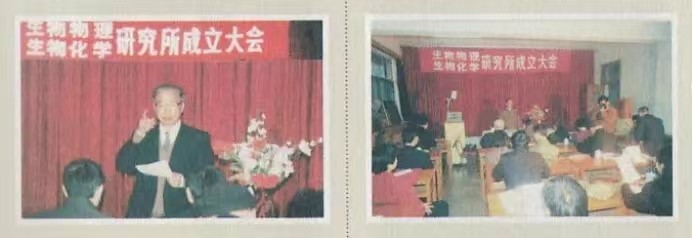
Picture (In 1994, the Institute of Biophysics and Biochemistry was established)
The convening of this conference not only provided a high-level platform for in-depth exchange and the integration of knowledge among experts and scholars from different countries and regions, but also significantly enhanced the influence of HUST's biophysics research. Moreover, it plays a vital role in promoting the development of biophysics in China on the global stage.
Looking ahead, the College of Life Science will continue to uphold its spirit of leading at the forefront, maintaining a global vision, fostering interdisciplinary integration, and advancing with determination. The college will relentlessly pursue excellence, furthering the development of all its disciplines, including biophysics, and gathering tremendous strength to contribute to building a strong scientific and technological nation.
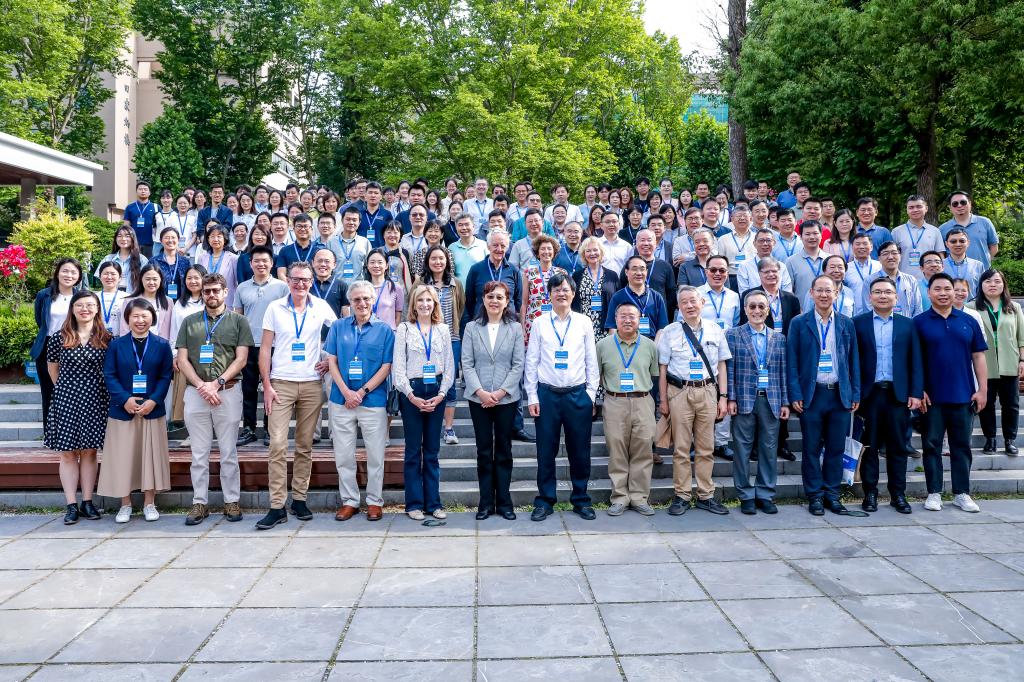
Picture (Group photo of participating scholars)